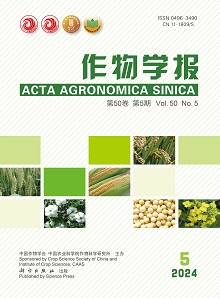Heterotrimeric GTP-binding protein (G protein), a kind of protein in living cells, plays an important role in signal transduction on plasma membrane. G protein is actively involved in many physiological processes in plant, such as seed germination, stem elongation, root growth, fruit development, and regulation of defense reaction system. To clarify the functions of G protein on wheat leaf rust resistance, we detected the roles of Gα and Gβ subunits at a gene expression level in the interaction between wheat (
Triticum aestvum L.) and
Puccinia triticina. The results may help to disclose the molecular mechanism of wheat leaf rust resistance and signal transduction. Typical compatible and incompatible interactions were constructed, from wheat leaf rust resistance near-isogenic lines TcLr1 and
P. triticina 05-22-64/05-8-63①. Expression of gene encoding Gα or Gβ subunit was detected in these interactions by real-time fluorescence quantitative PCR. Using water as control, the activities of chitinase, β-1,3-glucanase, and the rate changes of reactive oxygen ions production were determined in the compatible and incompatible interactions of wheat and
P. triticina, respectively. In contrast with inoculated by virulent or avirulent strain independently, wheat leaves were smeared in a thin layer by G protein inhibitor pertussis toxin and inoculated with avirulent strain after 24 h. The
[1]expressions of gene for Gα and Gβ subunits were up-regulated when inoculated with the avirulent strain but down-regulated by the inoculation of the virulent strain. Different subunits of G protein showed different priorities in the process of disease resistance signal transduction. The β subunit gene expressed earlier and in a higher level than the α subunit gene. In addition, G protein increased the resistance to
P. triticina through stimulating the defense enzyme activities and reactive oxygen ions. These results indicate that both Gα and Gβ subunits may be involved in the process of disease resistant signal transduction.

 WeChat
WeChat
 WeChat
WeChat